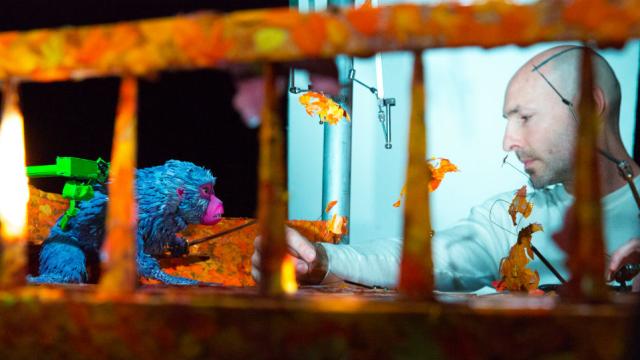After Coraline, Paranorman and The Boxtrolls, it would be easy to simply call Laika a stop motion animation studio. They are definitely that. But with each movie, culminating with August’s Kubo and the Two Strings, the company continues to change what stop motion can be.
Animator Justin Rasch works with Monkey on the Long Lake set for animation studio Laika’s Kubo and the Two Strings. Image: Jason Ptaszek, Laika Studios / Universal Pictures
“When we started Laika one of the core questions was, ‘What can we do with this medium?’” said Laika president and Kubo director Travis Knight. “‘How can we make it do stuff that it hasn’t done before? How can we bring it to a new era?’
“And really it was about not fetishising the craft aspect of it but trying to find a marriage of craft, art, technology, science and innovation and blending all those things together.”
Kubo and the Two Strings takes things to the next step of that. “We’re not purists about [stop motion],” said Knight. “Whatever tool makes the most sense is what we’ll use. So to varying degrees, stop motion, practical effects, digital effects, CG and 2D animation are a part of everything we do.”
Kubo is a big rousing family friendly adventure film that Laika hopes invokes the feeling of many famous family adventure movies. “It’s challenging and fun but has some old fashion scares,” said producer Arianne Sutner. “I think this movie is similar to the Harry Potter or Star Wars movies in terms of action adventure.”
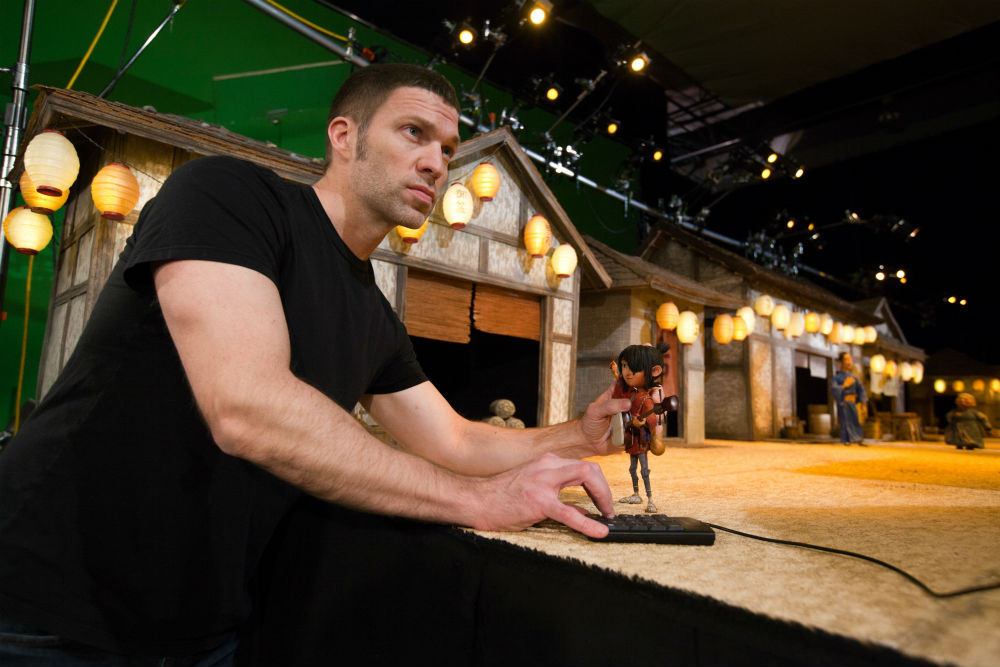
Director and animator Travis Knight working with Kubo on the Sun Village set at Laika. Image: Steven Wong Jr., Laika Studios / Universal Pictures
The story is about a young boy named Kubo who has some very particular and mysterious powers. He’ll set off on an adventure to figure out where those powers came from, and put together a legendary set of armour that will help him defeat the evil of the land. Along the way he’ll be joined by several crazy character like Monkey (voiced by Charlize Theron) and Beatle (voiced by Matthew McConaughey)
With sprawling vistas, huge crowds and water, Kubo definitely isn’t your typical stop motion animation film. But that’s the point. Laika is a small company. It’s located off the grid in Portland, OR and visiting earlier this month, you can tell there’s a real camaraderie and problem solving effort with every challenge. “[What we do is] really high tech. We develop these new systems, new machines, new gear to bring [things] to life, and yet we have a [set] held up by a cable and a bucket,” said Knight. “It’s lo-fi and high tech merging together and it makes me ever more confident that our teams can tackle any challenge.”
Tackling any challenge means starting with the basics though. If something can be done practically, that’s what they will do. Kubo and the Two Strings has a lot of water in it, for example. Can you do practical, stop motion animated water? They tried. First it was done as theatrical waves, almost cardboard moving up and down on a rig. Then it became thin mesh on a fluid churn rig. Neither was good enough. So water was made digitally and the tests were used for lighting reference while on set.
Water wasn’t possible practically, but other incredibly things are. Such as the largest stop motion animation character in the history of cinema: The Hollow Bones. The giant skeleton who Kubo has to battle in the movie is an 5.5m tall, fully functional moving set with a wing span of 7.3m. “It’s kind of ridiculous really because it’s essentially a moving set and it has to perform,” said Knight.
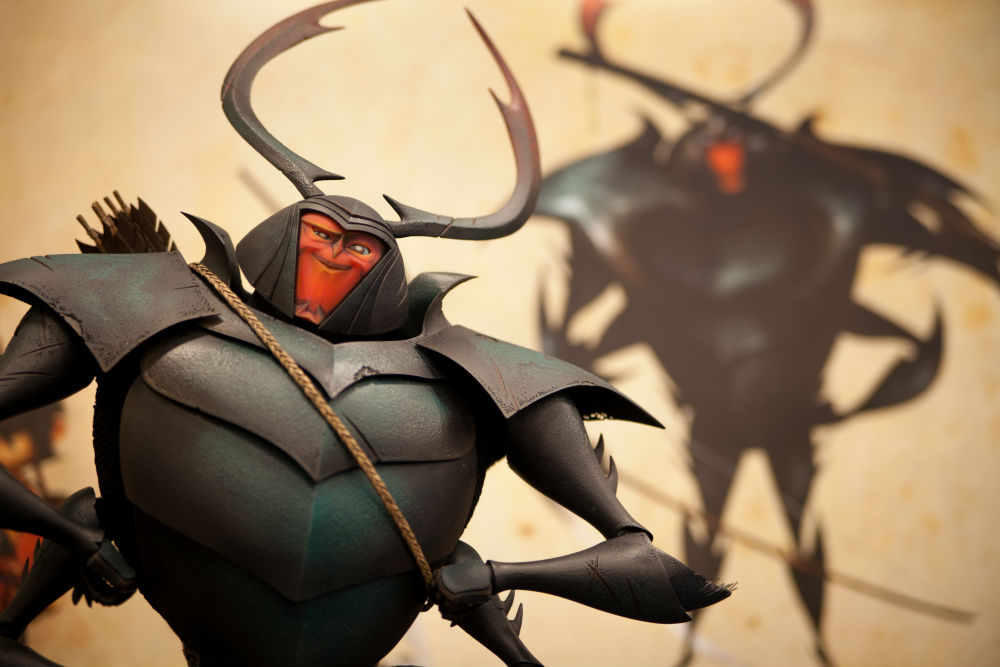
The Beetle puppet on display in the Puppet Room at Laika. Image: Steven Wong Jr., Laika Studios / Universal Pictures
A scene like that will be put together in multiple stages. Any animation with the lead characters is done for real. Meaning a person, standing on the set, moving the character frame by frame. When there’s more physical interaction between a character and set, that set may be built a second time to do that section. Then there will be set extensions. But nothing is fast at Laika. All in all they get about two seconds of animation per week on a single set.
Before that can even happen though, those sets have to be built. And built with the precision and detail to not just fit into the on-screen world, but to pass the eye test of the audience and with enough room to actually fit animators in there. To do that, every set is built 112cm off ground so animators can go underneath it. Then, they all detach in 0.61m square sections for the animators to pop up through from the bottom. Oh, and don’t forget the characters themselves have to be built. That’s another place things really stand out at Laika.
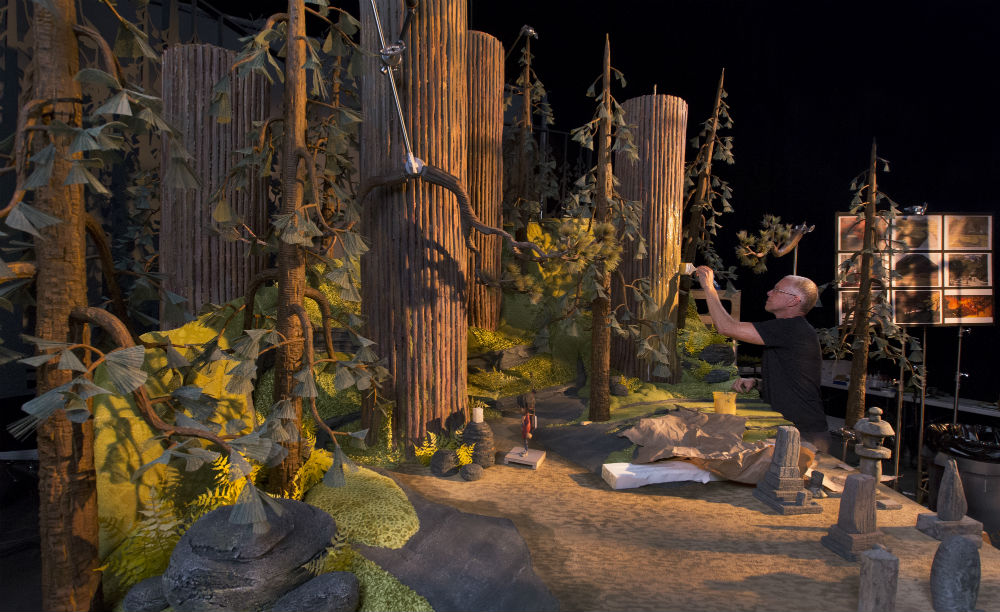
Production Designer Nelson Lowry working on a forest set for Kubo at the Two Strings. You can see how far it is off the ground, and the incredible detail. Image: John Leonhardt, Laika Studios / Universal Pictures
Not only is Laika a stop motion animation house, they pride themselves on being one of the world’s leading pioneers in 3D printing. When there are 66,000 faces made for a movie, sometimes with 24 different faces used once for one second of a scene, that’s a lot of physical stuff that needs to be created on site. They have evolved that printing process from film to film, going from plastic 3D printing to powder printing to, on Kubo, being the first people ever to use a colour plaster 3D printer. Kubo also has the first ever fully 3D printed stop motion character ever. The flying snake meets electric eel-looking character named Moon Beast was given a unique look not just by its printing but shooting it under different lights to create colours the three colour printer was unable to achieve.
The “normal” characters, like Kubo for example, are built on a custom metal skeleton called an armature, made up of ball and socket as well as hinge joints. They’re then covered with immaculately articulated costumes and faces that sometimes move with the real weight and flexibility if clothed. (Which in itself is another hugely complicated headache that can involve all kinds of materials.) Kubo himself is one of the least complicated characters on the film. Beetle is made up of 85 external armour parts and Monkey is Laika’s first fully fur creature, another huge stop motion animated challenge.
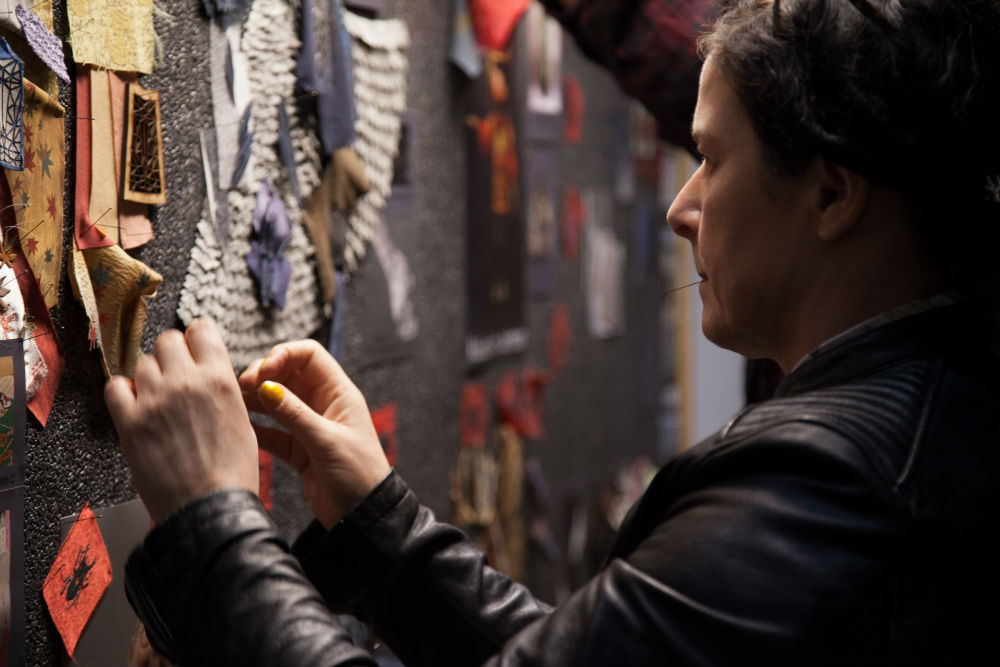
Costume Designer Deborah Cook places fabric samples on the costume boards for Kubo. Image: Steven Wong Jr., Laika Studios / Universal Pictures
All of those characters are then fitted with those numerous faces, each of broken down into different eyebrow and mouth sections. All combinations considered, there are roughly 48 million possible expressions on a character like Kubo alone.
Laika is pushing tech in other ways as well. One character named the Garden of Eyes (below), was created at actual scale and moved with a whole new mode of animation. This 3m tall slug with an eye on it is almost completely controlled by remote. Subtle movements on a control pad allow animators to be as precise as they’d be with their hands, but also do things much more quickly. By front loading the character’s creation with a new technological spin, once filming starts, animation can knock off what would take about a week by hand, in a single morning. The semi-animatronic puppet is, yet, another first for Laika.
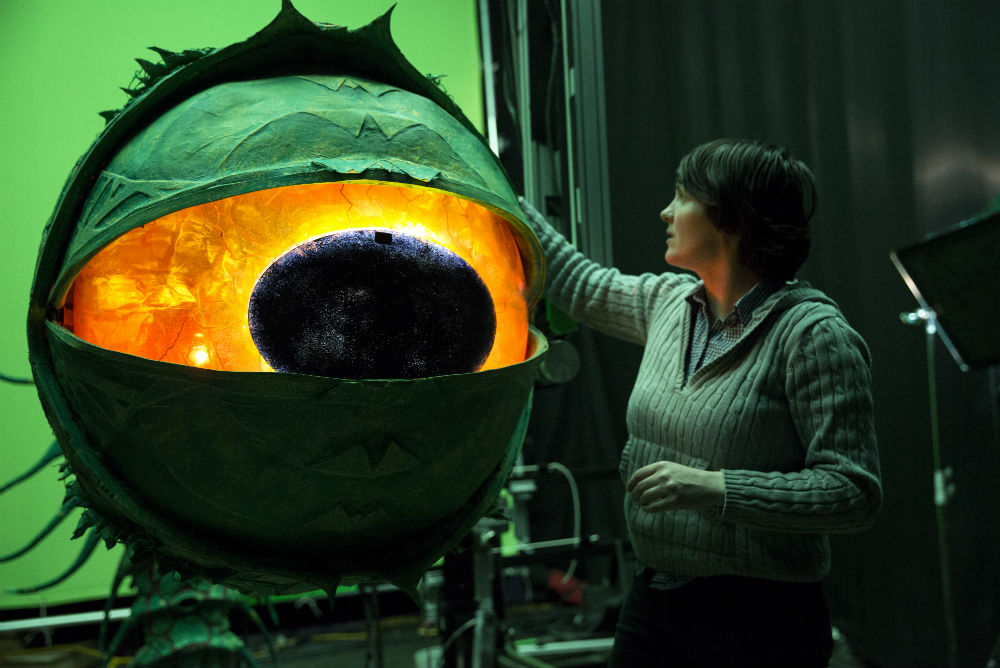
Model maker Molly Light works on the Garden of Eyes set. Image: Steven Wong Jr., Laika Studios / Universal Pictures
And if the advances in technology, printing and animation aren’t enough, for the first time ever Laika is not just working on Kubo and the Two Strings, it’s already started filming its next, still mystery, film. “This is the first time we actually had two projects that were overlapping,” said Knight. “It’s exciting to me to be bringing these films closer together because there are so many different stories we want to tell and time is not your friend, particularly if you make films the way we make them.”
Note: Focus Features paid for Gizmodo’s travel to Portland to report this piece.
